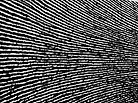about the BWA Contemporary Art Gallery

Attempts at breaking such image of the institution, which was typical for the so-called period of socialist realism, appeared in the middle of the 50s. The location of a new building of the exhibition hall in the city centre at Red Army Street (today Wojciecha Korfantego Alley) was approved in 1966. The building which was designed by Stanisław Kwaśniewicz in collaboration with constructor Franciszek Klimek was opened on January 5th, 1972. The interior decor was designed by Wojciech Szostak. Low reliefs at the building’s elevations are designed by Teresa Michałowska-Rauszer and Jerzy Kwiatkowski. The Intergrafia, a print event presenting the most interesting artistic achievements of Polish contemporary printmakers, and the Polish Print Biennial were also organised for the first time in the same year; these events have been included in the gallery programme and periodically presented up to now. In the 80s the gallery presented many exhibitions, including works by Jonasz Stern (1989), Jerzy Nowosielski (1989), and etchings by Albrecht Durer (1983). Polish Print Triennial has been organised since its first edition in 1991. The gallery has also shown the monographic exhibitions of Jerzy Modzelewski (1994), Zenon Moskwa (1995), Leon Tarasewicz (1995), Henryk Stażewski (1995), Jan Berdyszak (1996), Andrzej Szewczyk (1996), Łukasz Korolkiewicz (1997), Kajetan Sosnowski (1998), Magdalena Abakanowicz (1998), Piotr Potworowski (1990) Maria Jarema (1999), and Gerard Richter (2005). Polish Print Triennial has been organised at the BWA Contemporary Art Gallery since 1991. The International Art Meeting was organised for the first time in 1997. The most interesting exhibitions include the curator projects as follows: ‘Desert Storm’ (1994), ‘Art of Energetic Mediations’ (1995), ‘Polyptych’ (1998), ’Katowice Artistic Underground after 1953’ (2003), ‘Signal box/Nastawnia’ (2004), ‘A Certain Finland’ (2007), ‘Active Śląsk, Towards the Other’ (2005), ‘All Colours Are Allowed Unless They Interfere in Commerce’ (2008), and ‘Faces of Evil’ (2009). In 2008, in parallel to the change of the gallery status, a new logo was designed, which stresses two independent exhibition programmes realised at the main exhibition hall and at the Small Space which is open for young artists (this includes the year-long cycles of ‘Accidental Pleasures’ (2009) and ‘Women Replicants’ (2010).
The BWA Contemporary Art Gallery in Katowice is one of the biggest and most important institutions in Poland, which deal with the newest art and related branches. It is artistically independent and financed with the municipal funds of the city of Katowice.
The gallery is open to all the phenomena in visual arts. In its exhibition halls it presents both recognised artists and young debuting originators. It shows Polish and foreign art in wide cultural contexts.
The important part of the gallery’s activity includes meeting with artists, film shows, performances, discussions, sessions, lectures, plastic arts workshops and other educational activity.
The BWA Contemporary Art Gallery plays also the role of a publisher. In result of this activity the audience gets albums and catalogues of exhibitions, as well as important works by outstanding art critics, art historians and art theoreticians, which are necessary to all interested in the newest culture.
The exhibition space of the gallery counts amongst the largest exhibition halls in Poland. The interior of its large exhibition hall (800 m2) can be arranged according to the needs.
Managers and directors of the gallery:
Witold Ciechanowicz (1949—1956)
Helena Maria Ciecierska (1956—1957)
Stanisław Tejwan (1957—1967)
Witold Ciechanowicz (1967—1977)
Stanisław Gajewski (1977—1987)
Czesława Panek (1988—2006)
Marek Kuś (since 2006)
More info about presented exhibitions you can find in the monograph on the gallery by Marek Meschnik.

‘Exibition Artystic Biuro in Katowice 1949-1999’ the monograph on the gallery by Marek Meschnik ‘As we present readers with a publication dedicated to the 50th anniversary of Biuro Wystaw Artystycznych (BWA, The Art Exhibition Biuro) being open...

The Bureau of Artistic Exhibitions in Katowice came into being as a result of the realisation of conceptions directly after World War Two, and aimed to create an exhibition institution to promote plastic arts in Poland. Referring to the pre-war model of the Institute for Art Propaganda in Warsaw, the central exhibition institution, with its branch offices and exhibition halls, was founded, which was to popularize art in all regions of Poland. The branch office of the Central Bureau of Artistic Exhibitions in Katowice opened on August 1st, 1949 at 13, Dworcowa Street. The gallery presented mainly monographic exhibitions of local artists and exhibitions under the banners of political propaganda. These included such titles as, ‘Work and Peace’ (1950), ‘Friendship and Peace’ (1951), ‘Young People in the Struggle for Peace’ (1951), ‘Lenin and Stalin in Times of the October Revolution’ (1952), and ‘Stalingrad Yesterday and Today’ (1953).





